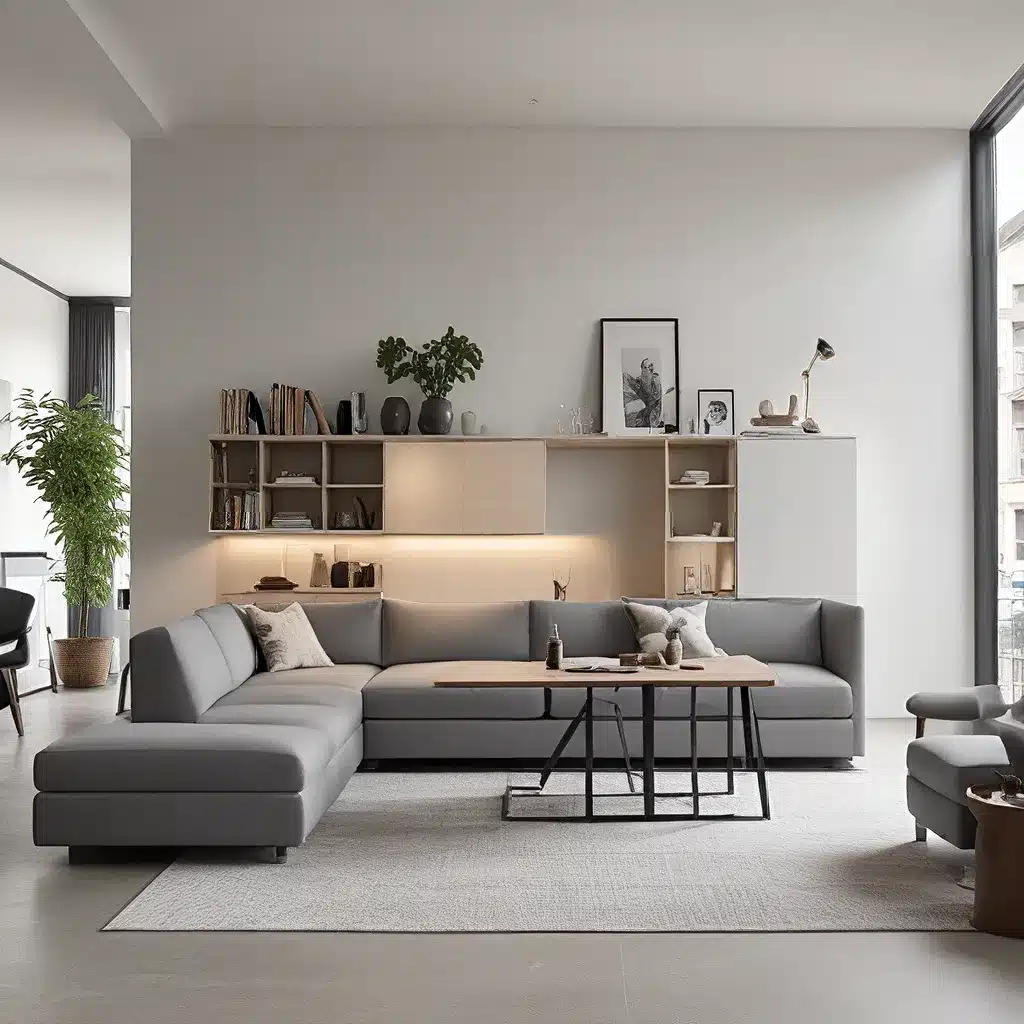Currently Empty: £0.00

As someone who has always been fascinated by the intersection of design and functionality, I’ve been on a bit of a journey when it comes to rethinking the role of furniture in our homes. Like many people, I used to subscribe to the traditional notion that a living room wasn’t complete without a plush sofa, a coffee table, and all the trappings of a “proper” seating area. But over the years, I’ve come to realize that this rigid approach to space planning can actually hinder our ability to truly live in our living spaces.
The Rise of the Fluid Lifestyle
These days, the boundaries between work and home, public and private, are becoming increasingly blurred. We live in turbulent times, and our living spaces need to be able to adapt and evolve alongside the rhythm of our lives. Gone are the days when a room could be neatly compartmentalized and relegated to a single purpose. Instead, we’re craving flexible solutions that allow us to seamlessly transition between tasks, activities, and modes of being.
This shift towards a more fluid lifestyle is being driven by a number of factors. For one, the rise of remote work and the “hoffice” (the merging of the home and the office) has prompted us to rethink how we utilize our living spaces. No longer are we confined to a desk or a designated work zone – we want the freedom to move, to collaborate, to find moments of focus and moments of inspiration, all within the comfort of our own homes.
At the same time, the COVID-19 pandemic has also influenced our spatial needs and desires. Many of us are craving larger living spaces that can accommodate a diverse range of activities, from home offices and fitness rooms to crafting nooks and game areas. But the reality is, in many urban centers, these spacious dream homes are simply out of reach. Which is why flexible, adaptable solutions have become so essential in helping us maximize the potential of even the most compact abodes.
The Power of Movable Partitions
One of the key ways that we can inject more fluidity into our living spaces is through the strategic use of sliding and folding partitions. These versatile elements allow us to quickly and easily reconfigure a room, dividing it into smaller, more intimate zones or opening it up to create a larger, more expansive feel.
As Hawa Sliding Solutions, a leading provider of these systems, explains, movable partitions offer a wealth of advantages. They can create privacy in open-plan settings, help us make the most of small apartments, and generally make spaces more customizable and adaptable to our changing needs.
But it’s not just about the practical benefits – these sliding and folding walls can also be a design statement in their own right. By carefully selecting the materials, finishes, and hardware, we can imbue them with a sense of style and personality that seamlessly integrates with the overall aesthetic of a space.
Embracing the Furniture-Free Lifestyle
Of course, the idea of a more fluid, movement-friendly living space extends beyond just the use of sliding partitions. Some individuals and families have taken this concept even further by embracing a more minimalist, furniture-free approach to their homes.
As the experts at Petra Fisher Movement explain, going “furniture-free” can be a game-changer when it comes to maintaining whole-body health and wellness. By eliminating traditional seating and resting surfaces like sofas, chairs, and beds, we’re forced to engage our bodies in new and creative ways, constantly moving and adapting to our environments.
Of course, this radical shift in perspective doesn’t come without its challenges. Convincing your partner or family members to ditch the beloved couch can be a tough sell, and entertaining guests in a space devoid of conventional furnishings can take some getting used to. But for those who are willing to take the plunge, the rewards can be truly transformative.
Sofa Spectacular, the UK-based furniture store, has recognized this growing demand for more fluid, movement-friendly living spaces. By offering a wide range of sliding, folding, and modular furniture solutions, they’re empowering their customers to create homes that can adapt and evolve alongside their changing needs and lifestyles.
Designing for the Future of Living
As we look to the future, it’s clear that the way we think about living spaces is undergoing a profound transformation. Gone are the days of static, single-purpose rooms – instead, we’re embracing a more dynamic, multifunctional approach that allows us to seamlessly transition between work, play, and relaxation.
Furniture brands like Living Spaces are leading the charge, with modular, configurable pieces that can be rearranged and repurposed to suit our ever-changing needs. And as technology continues to advance, we’re likely to see even more innovative solutions that further blur the lines between the physical and digital realms.
But beyond just the practical considerations, this shift towards a more fluid lifestyle also has important implications for our overall well-being. By embracing movement, adaptability, and a sense of playfulness in our living spaces, we’re not just optimizing our environments – we’re also nurturing our physical, mental, and emotional health.
So whether you’re looking to create a more dynamic home office, a versatile entertaining space, or a truly customizable oasis of calm, the key is to let go of the rigid, traditional notions of what a “living room” should be. Instead, embrace the power of flexibility, the beauty of movement, and the transformative potential of fluid living spaces. After all, the future of home design is all about adapting, evolving, and living life to the fullest.

